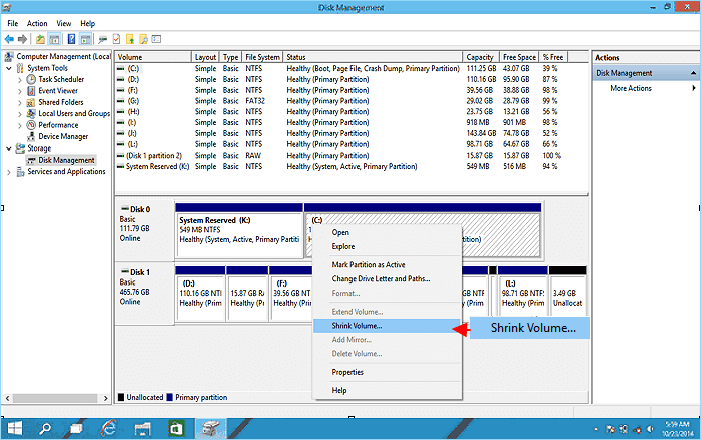
Step 5 Key in the amount of space you would to add to this volume or partitions - Usually, in MBs, then click “OK” and it’s finished. Step 4 A new window will display the properties of your hard disk. Then select the partition that you would like to extend. Step 3 Click on the arrow button, which is usually next to the drive. On the right, scroll down and choose 'Manage Disks and Volumes'.
:max_bytes(150000):strip_icc()/aomei-partition-assistant-se-5c8259f64cedfd000190b147.png)
Step 2 Scroll down and select the 'Storage' option. A new window will open displaying various options settle on the 'System' option. Step 1 Click on the Start menu, select 'Settings'. Here, it would be best to keep in mind that this method is only applicable starting with Windows 11/10 build 20197. This article gives a detailed solution on how to resize partition in Windows 11/f10 without data loss, let’s check out. At this point, partitioning remains to be the best solution. Moreover, computers tend to decrease in their performance when the storage space in the local disk C is insufficient. In doing so, space must be sufficient space and the best way is to partition the hard drive. You can decide to have more than one operating system (Microsoft Windows and Ubuntu) running on the same hard drive. There is usually an auto-generated notification of "You are running out of space," The only way to curb this is by partitioning. To get rid of the 'running out of space' notifications. You can therefore opt to resize the partitions in the hard drive and make utmost use of it.

It is not easy to account for all the data on your hard disk. Some of the significant reasons to resize partition Windows 11/10 are

Resizing a partition is the process of re-allocating the disk space in a Windows 11/10 computer by shrinking or extending the partitions to utilize the disk space effectively. Therefore, you can alter its partitionings by resizing it. But these partitionings generally tend to be monotonous. Conversely, you can buy a PC with more than one scant partition. Newly purchased PCs are usually single-partitioned.


 0 kommentar(er)
0 kommentar(er)
